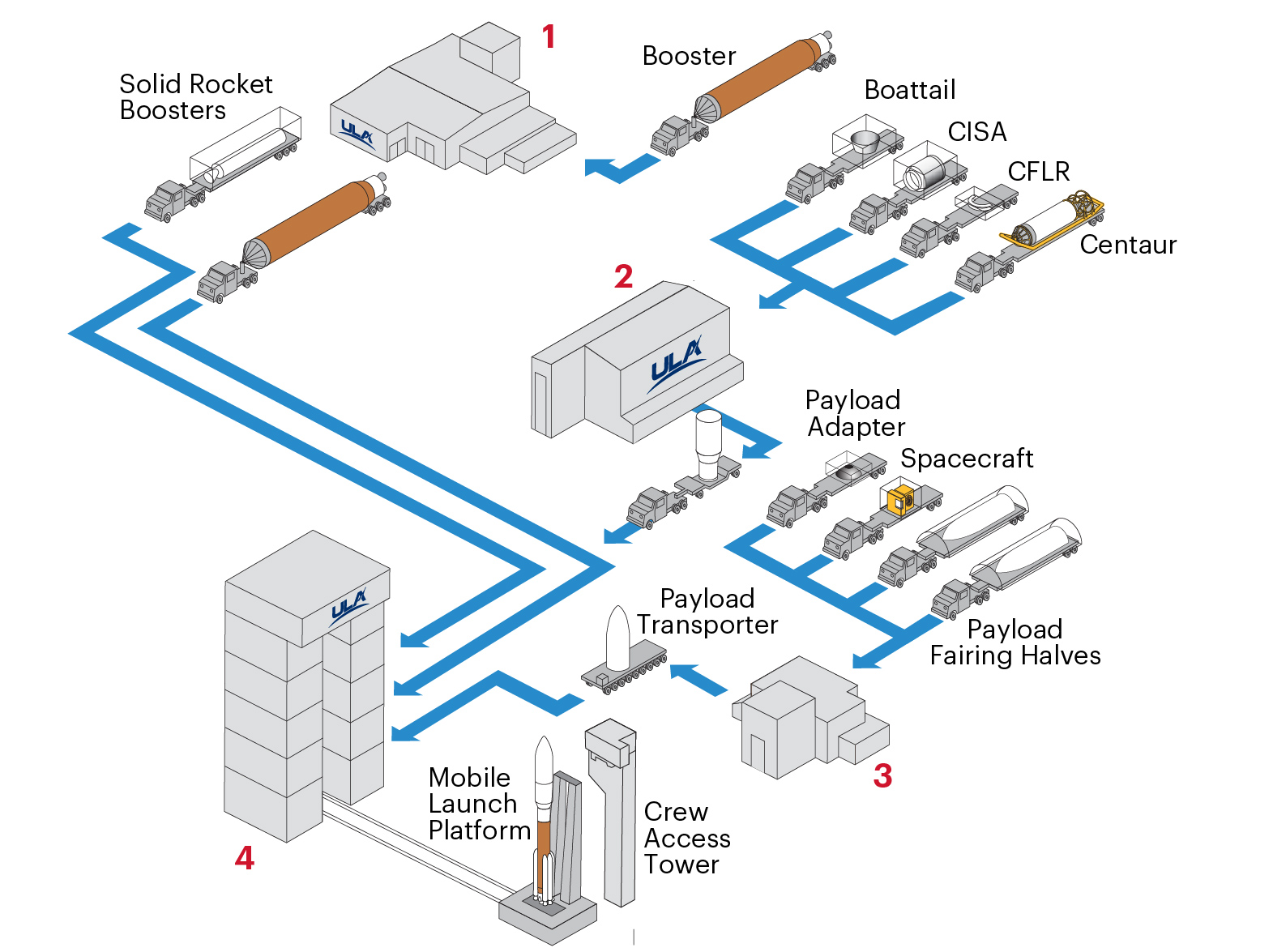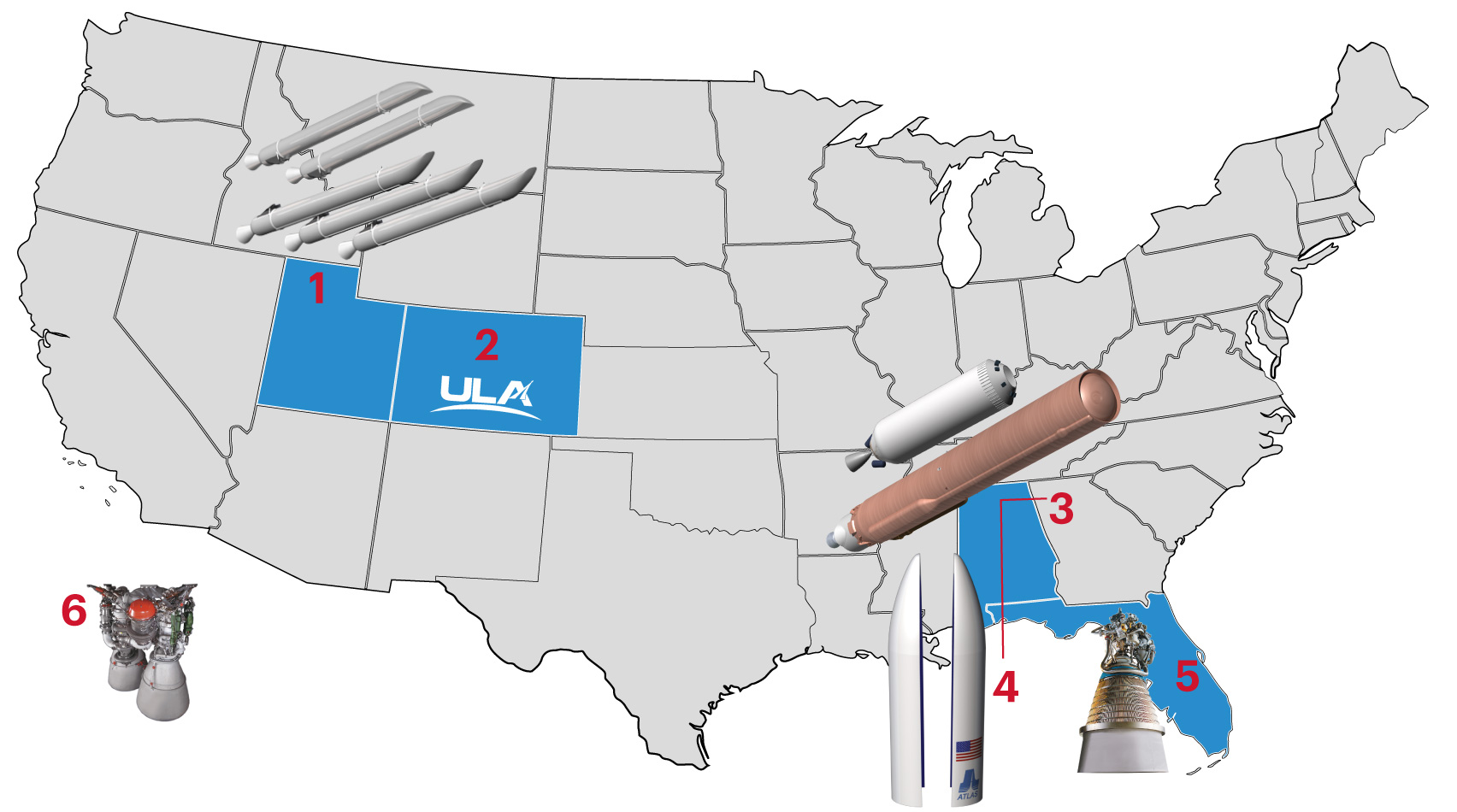Atlas V SuCcessfully launches VIASAT-3 Flight 2
ULA's Atlas V launched the ViaSat-3 Flight 2 ultra-high-capacity broadband spacecraft for Viasat, a global technology company helping businesses, governments and communities transform their world through connectivity. Once in service, ViaSat-3 Flight 2 is expected to more than double the bandwidth capacity of Viasat’s entire existing satellite fleet.
Launch Date and Time: Nov. 13 at 10:04 p.m. EST (0304 UTC Nov. 14)
GO Atlas! GO Centaur! GO Viasat!
Launch BROADCAST
Live updates
Join the conversation on social media!
@ulalaunch @viasat @boeingspace
Mission Overview
An Atlas V 551 rocket, configured with five side-mounted solid rocket boosters and a standard-length payload fairing, will utilize several launch optimization features to place the ViaSat-3 Flight 2 spacecraft into a geosynchronous transfer orbit. The craft is one of the heaviest single-satellite payloads. Liftoff will occur from Space Launch Complex-41 at Cape Canaveral Space Force Station, Florida.
Flight Profile
.jpg?sfvrsn=507811ad_0)
Launch Vehicle
Payload Fairing (PLF)
The spacecraft are encapsulated in a 17.7-ft (5.4-m) diameter standard payload fairing. The PLF is a sandwich composite structure made with a vented aluminum-honeycomb core and graphite-epoxy face sheets. The bisector (two-piece shell) PLF encapsulates both the Centaur and the satellites. The vehicle's height with the 5-meter standard PLF is approximately 196 ft (59.7 m).
Centaur
The Centaur second stage is 10 ft (3 m) in diameter and 41.5 ft (12.6 m) in length. Its propellant tanks are pressure-stabilized and constructed of corrosion-resistant stainless steel. Centaur is a cryogenic vehicle, fueled with liquid hydrogen and liquid oxygen, powered by an RL10C-1-1 engine producing 23,825 lbs (106 kilo-Newtons) of thrust. The cryogenic tanks are insulated with a combination of helium-purged blankets, radiation shields and spray-on foam insulation (SOFI). The Centaur forward adapter (CFA) provides structural mountings for the fault-tolerant avionics system and structural and electrical interfaces with the spacecraft.
Booster
The booster is 12.5 ft (3.8 m) in diameter and 106.5 ft (32.5 m) in length. The booster's tanks are structurally rigid and constructed of isogrid aluminum barrels, spun-formed aluminum domes and intertank skirts. Booster propulsion is provided by the RD-180 engine system (a single engine with two thrust chambers). The RD-180 burns RP-1 (Rocket Propellant-1 or highly purified kerosene) and liquid oxygen and delivers 860,200 lbs (3.83 mega-Newtons) of thrust at sea level. Five solid rocket boosters (SRBs) generate the additional power required at liftoff, with each providing 371,550 lbs (1.6 mega-Newtons) of thrust. The Centaur avionics system, provides guidance, flight control and vehicle sequencing functions during the booster and Centaur phases of flight.
.jpg?sfvrsn=a2d1840b_0)
Space Launch Complex-41 // Processing
Space Launch Complex-41, the East Coast home of the Atlas V rocket at Cape Canaveral Space Force Station in Florida, employs a “clean pad” concept of operations to ready launch vehicles and payloads for ascent into space. The rocket elements are assembled atop a Mobile Launch Platform inside the Vertical Integration Facility (VIF) located adjacent to the launch pad. The platform and fully stacked Atlas V then travel by rail approximately 1,800 feet northward from the VIF to the pad for the final countdown, fueling and liftoff.

1. Advanced Spaceflight Operations Center (ASOC)
Launch Control Center
Mission Director’s Center,
Mission Support Teams,
Launch Vehicle Horizontal Processing &
Ordnance Installation
2. Delta Operations Center (DOC)
Offline Vertical Integration (OVI):
Interstage Adapters, Centaur,
Boattail, Base Module & Centaur
Forward Load Reactor Deck
3. Payload Processing Facility
Spacecraft Processing,
Testing & Encapsulation
4. Vertical Integration Facility (VIF)
Launch Vehicle Integration &
Testing, Spacecraft Mate &
Integrated Operations
Production

1. Promontory, UT
Solid Rocket Booster Fabrication
at Northrop Grumman
2. Denver, CO
ULA Headquarters &
Design Center Engineering
3. Decatur, AL
Booster & Centaur Tank
Fabrication, Final Assembly
4. Decatur, AL
5.4-m Payload Fairing
Fabrication at Beyond Gravity
5. West Palm Beach, FL
RL10 Engine Fabrication at
Aerojet Rocketdyne, an
L3Harris Technologies company
6. Khimki, Russia
RD-180 Engine Fabrication at
NPO Energomash


.jpg?sfvrsn=ebc53f59_0)